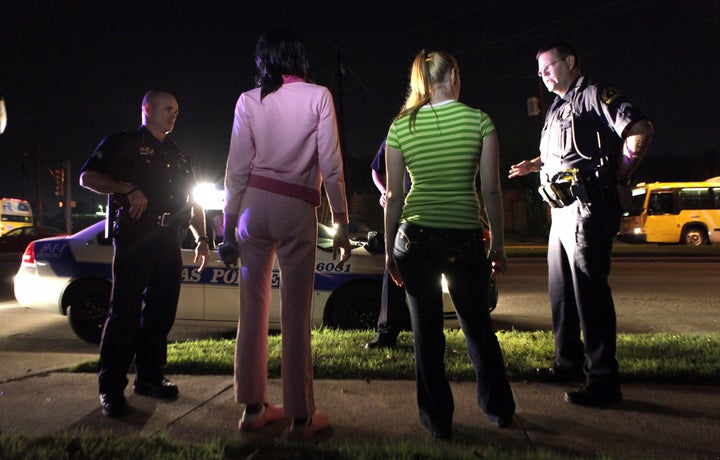
Here is a letter to me from Rob Morris, just back from a recent trip on behalf of his child trafficking rescue organization, Love 146.
My interview with Rob is podcasting on my WNYC show, "Here's The Thing," beginning Monday.
Dear Alec,
Just got in from my trip to the Philippines and it was amazing. I think people too often only talk about the horror and despair surrounding child trafficking and exploitation (which is a reality), but not enough about the hope, empowerment and change that is also just as much of a reality.
As I mentioned in my email, while in the Philippines I had the privilege of being part of two weddings for girls who were rescued years ago, were brought to our safe home, went through our program and were reintegrated back into a community. They came back to our safe home because they wanted to have their weddings there. It was amazing and beautiful. It was so humbling and such an honor to be a part of it.
While there, I was also able to spend time with girls who are currently in the safe home as well as several who had graduated from the home and are now living in communities and holding down good jobs. One of the girls I met with is Amanda. Amanda's past of abuse and exploitation began when she was eight. She was eventually trafficked throughout different provinces and even sold on the Internet. She was rescued when she was 14 and then moved from institution to institution. Her greatest desire was to go to school. Because she was unable to attend school in these institutions she ran away and began working in bars and ended up being exploited again.
Rescued again, she came into Love146's care. We lost no time putting Amanda in a home study program in our safe home that would allow her to learn at her own pace. At age 17 she began at a fourth grade level. After just one year, she passed exams that allowed her to skip high school and go on to college. During college we continued to support her with private tutoring. She has now finished her courses and passed qualifying exams to become a professional caregiver. She is now able to work in hospitals, schools, and other facilities with children, adults and the elderly.
How many times does a girl need to be rescued before she is free? For Amanda, the answer was until she was given access to education.
Another girl I met with was Remy, who is still in our safe home. She was absolutely radiant and excited. The reason being that after 4 years of court hearings and red tape, she finally saw her traffickers (two women) sentenced last week for up to life in prison for child trafficking and the sexual exploitation of a minor. She said that after the sentencing it was like someone finally pulled a thorn out of her chest. Justice is such an important part of recovery for these children.
The trafficking and sexual exploitation of children is one of the darkest stories on the planet. This physical, mental, and emotional trauma can leave kids broken and scarred for life. Interventions for these children are critical to their survival. The complex influences of culture, economics, religion and politics require a thoughtful, committed response. This is why Love146 exists.
Since 2002, we have been responding with effective, intentional and sustainable prevention and aftercare solutions throughout Asia, Europe and the United States. Through innovative training, education, and advocacy we protect and defend the vulnerable. In addition, we help restore the lives and childhoods of survivors, through training caregivers and by providing shelter, therapy, education and vocational training, empowering children to go from victims to survivors, then on to thrivers. Love146 also works to grow a body of research on the issue to enhance the knowledge base for the communities we serve, our partners and our work.
Some time ago, our director of aftercare in the Philippines conducted a therapy session for the girls in our home there. She asked each of them to walk down a pathway that winds its way through the safe home property, and to close their eyes and picture their future. She asked them, "What do you see?" For these children, to even dream about a future again is a miracle. Most of them question whether they will survive today. There is no tomorrow. So to dream of a future again is one of the first signs of recovery beginning to take place. One child said, "I picture myself on my 18th birthday and people celebrating the fact that I actually turned 18. Another child said, "I picture myself walking down the aisle at my high school graduation." A third child stood on the pathway, closed her eyes and pretended to hold a bouquet of flowers. She said, "I picture myself on my wedding day. Maybe one day someone will love me and value me the way I should be loved and valued." She later expressed her doubts to our director asking, "Do really think that anyone would ever want to love me or value me when they find out what has happened to me and what I've been through?"
These are the kinds of dreams the children we work with hope will one day become a reality. Dreams that most of us might take for granted. In fact, our director of aftercare says, "What others take for granted we usually celebrate -- an uneventful day, getting well from an illness, the grass turning green again, the rain... "
We, along with those who partner with us in our work, get to be a part of seeing the dreams of these children becoming a reality.
Within the last 18 months, we have seen a girl who once stood on a pathway dreaming for the moment she would turn 18... actually turn 18. And we celebrated that day. We saw a girl who one day had a dream that she would graduate from high school... eventually graduate from high school and go on for training to receive an education where she is now a certified caregiver enabling her to work with other children who have experienced what she once did. And we celebrated that day. And we saw a girl who one day walked down a pathway, closed her eyes and dreamed of a wedding day... eventually get married to someone who loves her and values her the way she should be loved and valued. Anything is possible!
In looking at the magnitude of the issue, I was asked in an interview for CNN what I thought it would take to end this kind of modern day slavery. My answer is this:
I think first of all it will take the audacity to believe that we CAN end it. Considering the overwhelming stats of how many slaves exist today and how much money the sale of human beings generates, some would call it naive or idealistic to believe we can end it. I prefer to think that it is audacious. And it has only been people of audacity that have ever changed the world. Was it naive or idealistic for a William Wilberforce who fought against the trans-Atlantic slave trade in Great Britain to believe that it could and should end? No, it was audacious. And it did come to an end. Was it naive or idealistic for a Martin Luther King Jr. to stand up on the Washington Mall and cry, "I have a dream!" No. It was audacious.
It will also take thought. I am reminded of the words of a human rights advocate in Cambodia when she said to me, "My advice to you in your work to end child trafficking and slavery is to THINK. Don't REACT. Be thoughtful in your approach to the issue you are dealing with so that you will be effective." Often times we see something that we feel needs to be fixed, but instead of taking the time to really think through a response that could be effective and sustainable, we just react. She went on to explain that if we are not thoughtful, many times our reaction can cause more harm than good. In my opinion, vulnerable people deserve better than that.
It will take tenacity. We need to be committed for the long haul. Albert Einstein said, "It's not that I'm so smart, it's just that I stick with problems longer." In other words, we don't give up, even when it gets hard. The reality is traffickers are committed 24/7. We must be at least that committed to stopping them. I love the words of jazz singer Billie Holiday who sang, "The difficult I'll do right now. The impossible will take a little while."
I think it will also take a collective effort. I love that U.S. Secretary of State Hillary Clinton added a fourth "P" to the international framework in combating human trafficking. In addition to Prevention, Protection, Prosecution, she added "Partnerships." If we are going to end modern day slavery, governments, non-government organizations, law enforcement, service providers, communities of faith, businesses and corporations, individuals, all have to work together. The reality is traffickers make up such a small fraction of the human race. Then there is the rest of us.
I could go on about the need to address demand, the need to create community-based solutions, the need for better research, the need to challenge boys to rebel against a culture that normalizes the objectification and exploitation of women and girls, etc.
We have lots of work to do. And I am encouraged at those who are joining the fight daily. Thank you Alec for using your public platform to educate and shed more light on this issue and for telling the stories of these courageous, strong and resilient children. They are my heroes. I appreciate your help. There is more detail about our work on our website: http://love146.org/
Some helpful short videos: http://love146.org/video. Thanks again!
-- Rob
Rob Morris
President & Co-Founder
Love146
